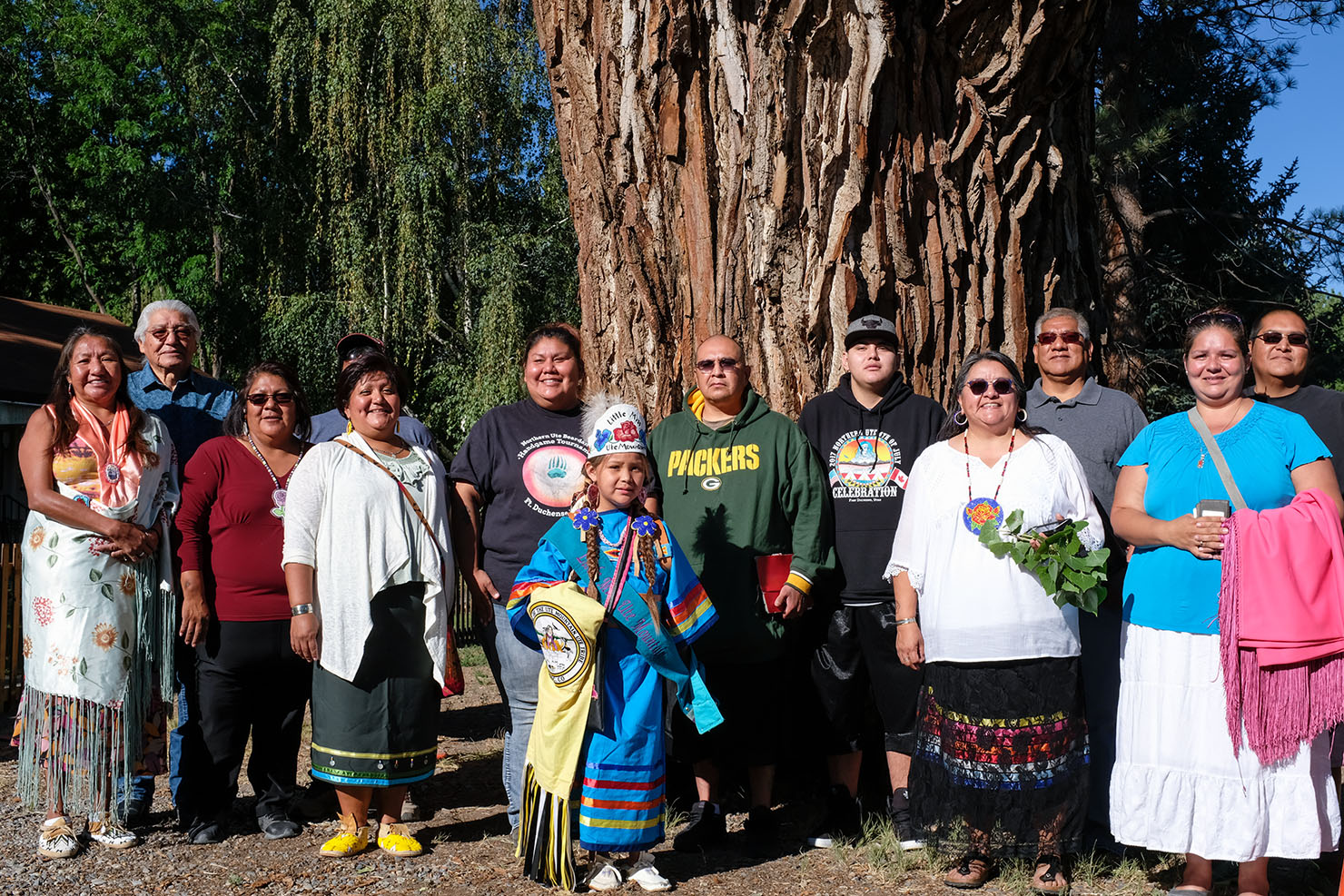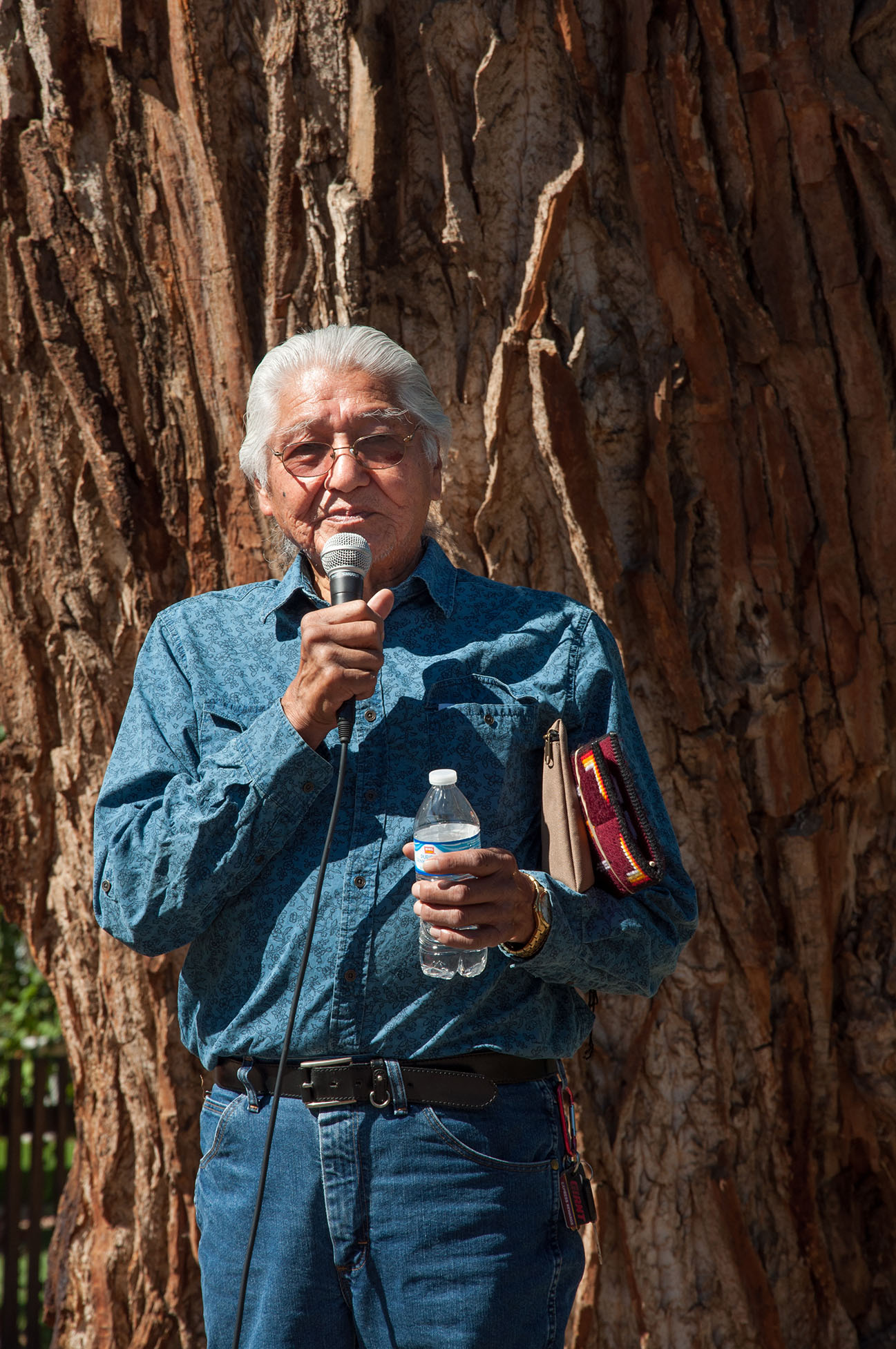The majestic Council Tree stood tall on the morning of Friday, Aug. 25, as members of the three Ute tribes, and the community of Delta, Colo. gathered near its base to honor the old cottonwood before it was cut down. The tree dates back over two centuries and holds a very special significance to the Ute people and their history. “It’s a great honor to be in the presence of this Grandfather tree,” Ute Mountain Ute Councilwoman Regina Lopez said.
Towering above the neighborhood and surrounding pines, the Council Tree could be seen from a great distance. Near its massive base, a small wooden sign speaks to the long history of the Ute Council Tree.
The Delta County Historical Society, owner of the 215+ year old Ute Council Tree in Delta, Colorado, made plans to have the ailing cottonwood cut down to a level of about ten to twelve feet above the ground from it’s original height of 110 feet.
The tree’s last major limb broke away from the trunk section in early August. Tree experts, following an up-close examination, determined that the tree was at a great risk of a catastrophic failure since the crown of the tree contained the only remaining branches. A strong wind could have stressed the trunk, and caused the tree to topple. According to a press release by The Delta County Historical Society, the risk had become unacceptable, and for the safety of nearby property, the majority of the tree had to be removed.
Ute Mountain Ute spiritual leader, Terry Knight was among those who felt that communication between city officials and the Ute tribes was inadequate and the process rushed. Many felt that there needed to be more time for discussion and preparations between the three Ute tribes concerning the decision. “No one really sat down with the Tribes to discuss this,” Southern Ute elder Kenny Frost said. “This tree is very sacred to us, we sat here long ago when we were one Ute tribe.”
“You all don’t really know what this old fella means to us Ute people, us Nuche,” Terry Knight said. “To us it’s a Grandfather that has seen our children grow.”
“Late leaders of the Ute tribes used to meet here, those people talked here, realizing the changes to come,” Knight said.
The Council Tree has great importance within Ute culture, as the tree was known to have significance when it was part of a cottonwood grove prior to the eviction of the Utes from the area in 1881.
“Sadness is in our hearts for this living symbol of the Ute people,” Alden Naranjo said. “Our history is within our hearts, it’s the places we stand upon. You see that here with our Grandfather tree.”
The Council Tree serves as a physical monument to the past for the Ute people; the living tree creates a tangible connection to the history of Ute bands that once called this vast expanse of Colorado their home.
“Our way of life still resides here,” said Shaun Chapoose of the Ute Tribe. “ The one thing I will remind you, is that his roots run deep.”
Tree removal experts, in partnership with Doughty Steel and Machine, Inc., begin the process of removing the uppermost limbs following the formal ceremonies, assembling a large crane at the tree site, which was used to lower cut branches in the tree crown to the ground, where they were loaded onto a truck for removal to a city storage facility, where they will remain until further notice from the Ute tribes. The Delta County Historical Society has further plans to create a memorial with the surviving trunk of the tree.
“We came here to honor the Ute people and this tree,” Delta City Mayor Ed Sisson said. “We intend no disrespect.”
“The main issue with this tree is that it is hollow, it was a public safety issue, we had to act quickly,” said Keith Lucy, president of the board of directors of the Delta County Historical Society.
Six small cottonwoods, nurtured into seedlings from the Ute Council Tree, are now growing in Delta’s Confluence Park, site of the former Council Tree Powwow. Seven trees were originally planted to represent each of the Ute bands, all but one of those saplings survived.
About thirty years ago, the three Ute tribes were also given seedlings from the Ute Council Tree, an effort spearheaded by the late Eugene Naranjo of the Southern Ute Indian Tribe.
“There is a lot of history here; ceremonies, prayers,” Southern Ute Cultural Education Coordinator, Hanley Frost said.
“This tree is still alive on the top — reaching to the sky,” he said. “We’re here one last time to pay our respects.”










